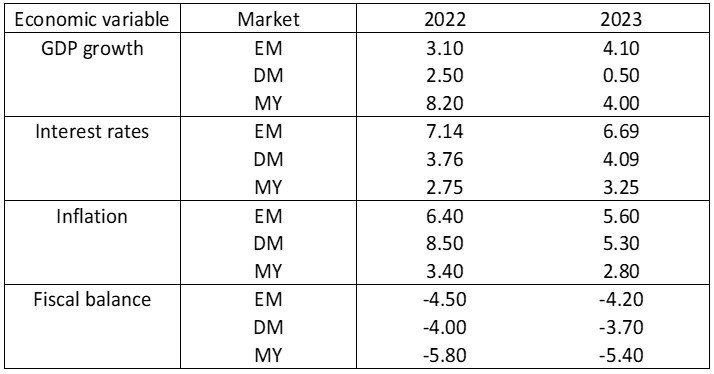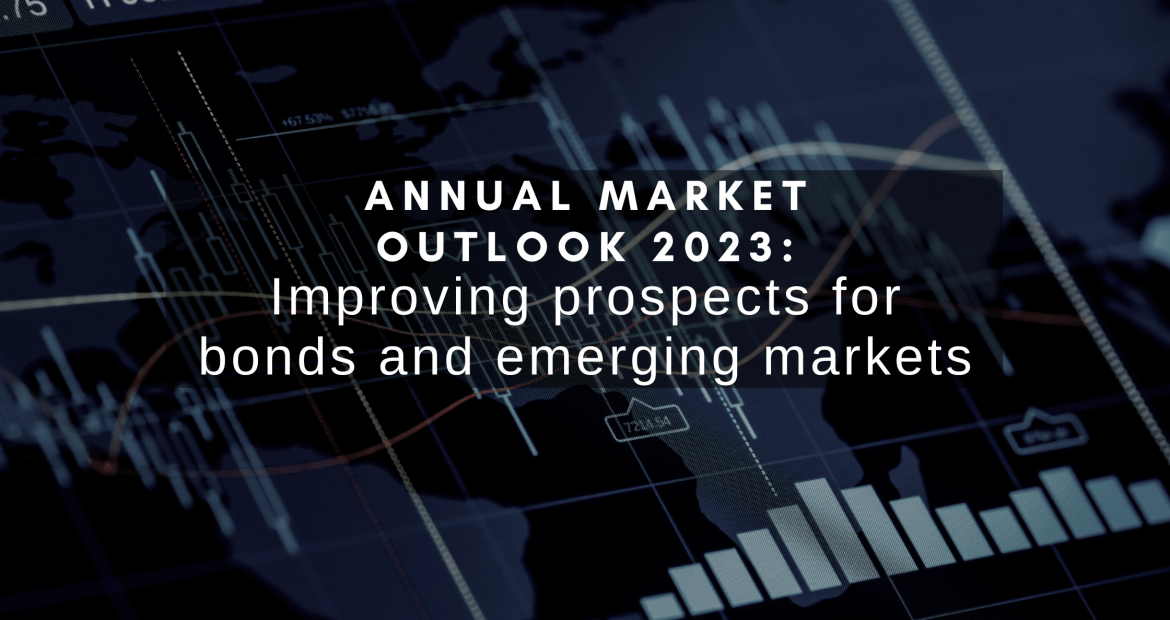The market backdrop in 2023 will be substantially different from the last two years, progressing out of an unusual economic environment induced by the pandemic. Higher inflation and interest rates are expected to reverse, or at least, stabilise in 2023. In particular, emerging markets including Malaysia, which underperformed in 2022, are likely to regain firmer footing next year.
Dynamic markets in 2023 will require nimble investing and flexible tactical strategy. This is particularly critical since 2023 will be a turning point for several macro trends, namely, inflation, interest rates and government policies. For the bond markets and risky asset classes, an extension of ongoing credit risks and cash flow strains will remain a theme to monitor.
Credit quality will come into focus
As such, while 2023 will be better for bonds, it is important that investors pay sharp attention to credit quality, since 2023 could see an extension of the default risk cycle, given the ongoing weaknesses in GDP growth and earnings, leading to stresses on corporate cash flows. Furthermore, compressing profit margins due to the tight labour markets, higher wages, and inventory restocking may constrain cash flow liquidity. This could also result in industries in shakeout, leading to mergers and acquisitions and an opportunistic use of capital reserves.
Overall, this could cause a mild deterioration of credit quality as cash levels drop, leading to capital restructuring in companies. Consequently, lower rated credits will remain at risk of debt extension and various corporate exercises to avoid rating downgrades, due to higher debt servicing costs from higher interest rates.
Conversely, investment grade bonds in defensive sectors are likely to outperform riskier sectors. Particularly, banks will benefit as earnings benefit from widening interest margins. Other defensive sectors that will benefit from higher income spreads are consumer staples, healthcare and utilities. Being necessities, these sectors will remain robust despite stresses on the macro credit environment.
Emerging market prospects appear brighter
Emerging markets are likely to recover faster than developed markets, after the underperformance over the last two years. This will be driven by an expected stabilisation of US interest rates and possibly easier US monetary policy due to the effects of a recession caused by a cyclical slowdown, reduction of fiscal stimulus, monetary policy tightening and credit risks on tightening liquidity conditions. Taken together, these factors will then lead to a weaker US Dollar and conversely, stronger emerging market currencies.
Emerging market fundamentals are also expected to strengthen in 2023, supporting their currencies and financial markets. While growth is expected to be broadly slower across the developed world with a forecast of 0.5%, emerging market growth is projected to be much higher at 4.1%. Of note, China and Hong Kong are expected to recover more strongly in 2023 than 2022 as economies open from a prolonged pandemic lockdown, contributing to higher EM growth in 2023, which is counter-trend to most economies globally where growth is higher in 2022 compared to 2023. Meanwhile, inflation between emerging markets and developed markets are expected to be similar at around 5% to 6%. This higher growth provides greater capacity for emerging markets to sustain the costs associated with higher interest rates. Additionally, growth will be a focal point and differentiating factor in 2023, since inflation was systemic and common to most economies over the last two years. The average emerging market deficit is also expected at 3.7% as compared to 4.2% at developed economies, both expected to narrow by 0.3% from 2022 to 2023.
Table 1: Comparison of key economic indicators on Emerging Markets (EM), Developing Markets (EM) and Malaysia (MY)

Note: All figures are average consensus forecasts; EM – emerging markets, DM – developed markets, MY – Malaysia.
Pivot in global and local markets
Variability in macro trends will require a keen sense of changes in the market environment in 2023, requiring planning and swift execution of investment strategy ahead of time. In Malaysia’s case, the effect of soon-to-peak US interest rates and a more dovish tone in monetary policy in 2023 could result in a return of foreign funds, due to a shift in the investment paradigm. There will also be other points of tension in the financial markets and economy, particularly with the expectation of the gradual removal of fuel subsidies in Malaysia, which will have to be balanced against causing a sharp spike in inflation.
Markets will also be monitoring government policies of Malaysia’s newly inaugurated Prime Minister in a multi-party coalition. If managed properly, this could lead to progress in policies conceived through broad consensus, although there could be potentially longer timeframes of policy execution and possible policy inertia due to the expected challenges of implementing change. A bright spot is that the newly minted government will be implementing change at a point when electorate and consumer sentiment has improved after the pandemic, and the 12th Malaysia Plan remains intact as a strategic blueprint for the economy from 2021 to 2025.
To conclude, US interest rates are expected to stabilise at around 4.75% to 5.00% in 2023, and around 3.25% in Malaysia. However, due to the outlook of transient inflation, financial markets are likely to look forward to lower inflation, rather than elevated inflation, spurring a more constructive outlook for investments. Higher real yields after deducting for the cost of inflation will enhance investment confidence. Market optimism will also be supported by a weaker US Dollar, already attractive yields in the bond markets, and sustained cash deployment in a post-pandemic economy.
Disclaimer
The information, analysis and opinions expressed herein are for general information only and are not intended to provide specific advice or recommendations for any individual entity. Individual investors should contact their own licensed financial professional advisor to determine the most appropriate investment options. This material contains the opinions of the manager, based on assumptions or market conditions and such opinions are subject to change without notice. This material has been distributed for informational purposes only and should not be considered as investment advice or a recommendation of any particular security, strategy or investment product. Information provided herein may include data or opinion that has been obtained from, or is based on, sources believed to be reliable, but is not guaranteed as to the accuracy or completeness of the information. No part of this material may be reproduced in any form, or referred to in any other publication, without express written permission. Opus Asset Management Sdn Bhd and its employees accept no liability whatsoever with respect to the use of this material or its contents.





